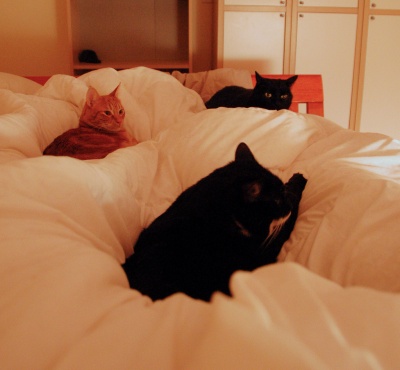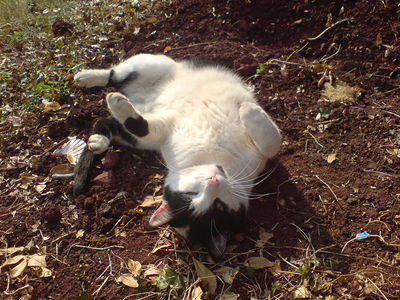
Having more than one cat, you’ve discovered that cats are different than dogs. Dogs usually enjoy the company of other canines as they are pack animals. Cats don’t mind being loners, some even prefer it. Cats are territorial to boot and each will claim a space as their own.
Dogs are usually just happy to be with you and easily accept any changes in your company. Cats can be more sensitive to any changes in their routines.
So, when you try to introduce another cat to the group, don’t mix them together immediately. Introductions can take time and patience. It’s best to add kittens if possible. They also liven up the household and can bring new life to older cats.
Keep the new arrival in a separate room with his own litter box. Food dishes should be in a different area of the room. Cats don’t like to eat where they poop.
Your existing cats will be sniffing around which will help them to become used to the new one. The cats may be a little stressed at first.
After several days let new kitty explore the rest of the house while old kitties are placed in a secure room. Let old kitties explore the new kitty’s room when she is securely away.
After a few days of this exercise, place a secure gate between the rooms and let the cats see each other, making sure they can’t actually reach each other.
Bribes with treats work. Just feed treats to all the cats within sight of each other, gradually bringing them closer. At this point you can allow limited contact. Remove the gate and let the cats interact for a short period of time. If actions become too aggressive, separate them and put them back with the gate up. Try repeating contact in a couple of days. Patience is key here.
Sometimes, in multiple cat households, there may be cats that never really like each other, but they do learn tolerance. Your calm attitude with all of them will help as cats will pick up your moods.
If your cats remain indoors (which we recommend) give each one its own litter box and own space, separate from the others. While some cats are content with sharing, many prefer their own. Individual litter boxes can help avoid problems with cats soiling in inappropriate places. In case of illness, it’s also easier to tell which cat is sick.
Feeding dishes should also be placed in each cat’s own space. Again, some cats don’t mind sharing, but each cat having it’s own place avoids aggression at feeding time.
Give your cats lots of toys to play with. Provide them with cat trees where they can satisfy their need to climb and enjoy high places.
To ensure nothing valuable is destroyed by your cats’ curiosity, remove all objects you value. For the love of cats, cat-proof your house.
For those of you who want to give your cats a taste of outdoors, there are enclosures available that attach to your house. They keep your cats safe while giving them a bit of fresh air.
Before adding a cat or more to your existing menagerie, consider the cost of vet care, food, litterboxes and litter, toys and incidentals. Before bringing any new cat into your home, take him/her to the vet for a thorough examination.
Again, be patient and calm and enjoy your cats. Spaying or neutering your cats will cut down on aggression and keep your cats healthier as well.
Related articles:



